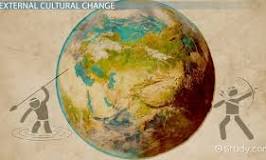The Dynamics of Cultural Change
Cultural change is a constant and evolving process that shapes societies around the world. It encompasses the transformation of beliefs, values, norms, and practices within a community over time. Understanding the dynamics of cultural change is essential to grasp how societies adapt to new challenges and opportunities.
Factors Influencing Cultural Change
Various factors contribute to cultural change, including globalization, technological advancements, migration, social movements, and generational shifts. Globalization, for instance, has facilitated the exchange of ideas and practices among different cultures, leading to a blending of traditions and values.
The Impact of Technology
Technological advancements have significantly influenced cultural change by altering how people communicate, work, and interact with one another. The rise of social media platforms has connected individuals from diverse backgrounds, creating new spaces for cultural exchange and expression.
Social Movements and Cultural Shifts
Social movements play a crucial role in driving cultural change by advocating for equality, justice, and human rights. Movements such as #MeToo and Black Lives Matter have challenged existing power structures and norms, sparking conversations about inclusivity and diversity.
Generational Differences
Generational differences also contribute to cultural change as younger generations bring new perspectives and values into society. Their attitudes towards issues such as gender equality, environmental sustainability, and mental health shape the direction of cultural norms and practices.
The Importance of Preserving Cultural Heritage
While cultural change is inevitable, it is essential to preserve aspects of cultural heritage that hold significance for communities. By honoring traditions, languages, arts, and customs passed down through generations, societies can maintain a sense of identity amidst rapid transformations.
Embracing Diversity in Cultural Change
Embracing diversity is key to navigating cultural change effectively. By valuing different perspectives, experiences, and identities within a society, communities can foster inclusivity and understanding amid shifting cultural landscapes.
In Conclusion
Cultural change is a dynamic process that reflects the evolving nature of human societies. By recognizing the factors influencing cultural change and embracing diversity within communities, we can navigate transitions with resilience and openness to create a more inclusive world for future generations.
Understanding Cultural Change: Key Steps, Major Shifts, Definitions, and Importance
- What are the 5 steps in changing culture?
- What are the three major cultural changes?
- What do you mean by cultural change?
- Why is culture change important?
What are the 5 steps in changing culture?
In the realm of cultural change, understanding the steps involved in shifting organizational or societal norms is crucial for successful transformation. The five key steps in changing culture typically involve first recognizing the need for change, followed by defining the desired cultural values and behaviors that align with the organization’s or community’s goals. The next step often entails communicating the vision for change effectively to stakeholders, fostering buy-in and commitment. Implementation of new practices and behaviors consistent with the desired culture is then carried out, supported by ongoing feedback mechanisms to monitor progress and make adjustments as needed. Lastly, celebrating successes and reinforcing positive cultural changes helps solidify the new norms within the organization or community. Through a systematic approach to cultural change, lasting transformations can be achieved that support growth and adaptation in a rapidly evolving world.
What are the three major cultural changes?
Cultural change encompasses a myriad of transformations that shape societies over time. While it is challenging to pinpoint only three major cultural changes due to the complexity and diversity of cultural evolution, some significant shifts include the impact of globalization on cultural interconnectedness, the rise of digital technology influencing communication and social interactions, and the increasing awareness and advocacy for diversity and inclusion within societies. These changes highlight the dynamic nature of culture and its adaptation to new contexts and challenges in our rapidly evolving world.
What do you mean by cultural change?
Cultural change refers to the process through which societies undergo shifts in their beliefs, values, customs, and behaviors over time. It involves the adaptation and evolution of cultural norms and practices within a community, often influenced by factors such as globalization, technological advancements, social movements, and generational shifts. Cultural change is a dynamic phenomenon that reflects the complex interactions between individuals, groups, and institutions within a society, shaping how people perceive the world around them and interact with one another. Understanding cultural change is crucial for comprehending how societies respond to external influences and internal dynamics while navigating transitions in beliefs and practices.
Why is culture change important?
Understanding the importance of cultural change is crucial in navigating the complexities of evolving societies. Culture change plays a significant role in shaping norms, values, and behaviors within a community, influencing how individuals interact and perceive the world around them. Embracing cultural change allows societies to adapt to new challenges, foster innovation, and promote inclusivity. By recognizing the necessity of evolving cultural practices, communities can better address issues such as social justice, environmental sustainability, and technological advancements. Ultimately, culture change is vital for fostering progress, resilience, and unity within diverse societies.


